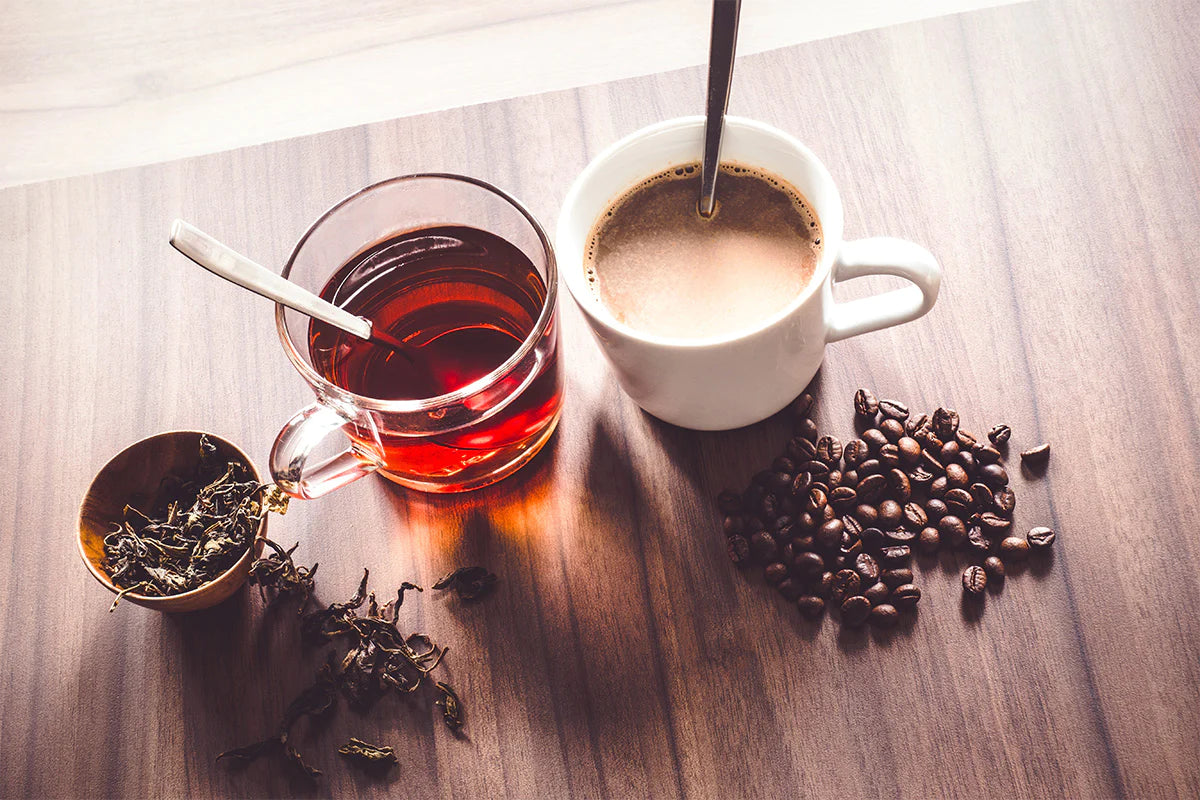Caffeine - it can be our biggest energy ally, but other times it’s our mind and body’s greatest enemy. There are times when caffeine can give you the perfect energy boost you need to get your day started or to help you crank out that extra bit of work. Some of your best days, workouts, or morning moments may all be backed by the power of caffeine. Why then, do some caffeinated drinks take us up a level, while others can leave us feeling jittery and panicked?
The answer lies in 1) where your caffeine is coming from and 2) how much caffeine you’re taking in. Let’s start straight from the source and talk about why where your caffeine comes from can pack a big punch on how the caffeine makes you feel.
One of the most common caffeine sources in the US is coffee. Hot, iced, espresso’d - you name it, caffeine from coffee beans is and has been widely consumed by Americans for years as the caffeine drink of choice. Unfortunately, many coffee consumers complain of negative side effects like anxiety, restlessness, insomnia, and increased heart rate. Despite these effects, 400 million Americans drink coffee daily, with 150 million of those Americans averaging 3 cups per day. For something that can cause jitters and lead to a crash landing of energy, that’s a lot of people who may not realize there’s a better way, equally delicious way to source your caffeine.
When it comes to sources, yerba mate is the top dog in our eyes for caffeine drinkers. That’s because yerba mate allows for a slow-release energy build. Our bodies process yerba mate differently given it contains other compounds, nutrients, and polyphenols to help keep your body balanced and feeling good. In other words, yerba mate gives you a stronger positive energy lift than tea but mitigates the jitters, anxiety, and crashing feeling of coffee.
Next, the amount of caffeine you consume will undoubtedly affect how you feel after drinking your daily pick-me-up. This is key in making sure that your caffeine is working with you, not against you, and that you’re safely consuming caffeine in a way that your body agrees with. Although the sweet spot on quantity may look slightly different from person to person, the FDA’s guidance is anything over 400mg can be unsafe and cause negative side effects. Within your body, caffeine is broken down mainly in the liver. It can remain in the blood anywhere from 1.5 to 9.5 hours, depending on various factors. It’s also worth noting the human body acclimates to caffeine, so the more you drink caffeinated beverages, the more of those same drinks you may need over time to feel the positive effects of caffeine.
At YRBA, we’ve carefully curated our caffeine levels to be roughly 100mg of caffeine per can. This level was optimized to ensure you could enjoy YRBA and the positive, lifting effects of yerba mate’s caffeine without feeling like you’re bouncing off the walls. Many other caffeinated seltzers try to fit as much caffeine as possible in a 12 ounce can, aiming for 200-300mg of caffeine per can. This can lead to unfocused mental stamina followed and ultimately energy crashes.
With the optimal amount of caffeine and caffeine from an herb that focuses on a gradual build up + come down, YRBA is your energy’s best friend with ingredients you can feel good about.
Sources


Leave a comment
This site is protected by hCaptcha and the hCaptcha Privacy Policy and Terms of Service apply.